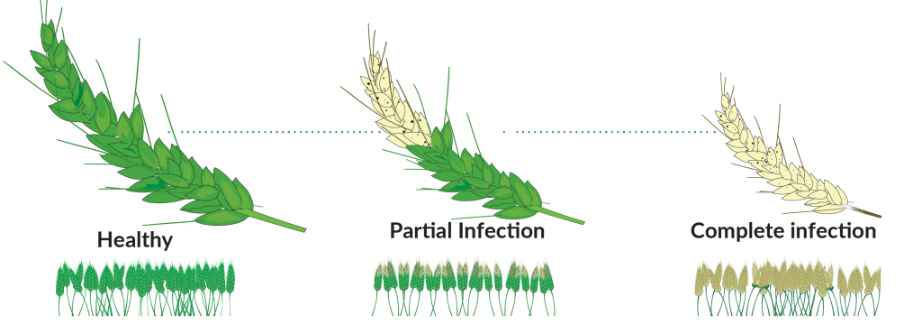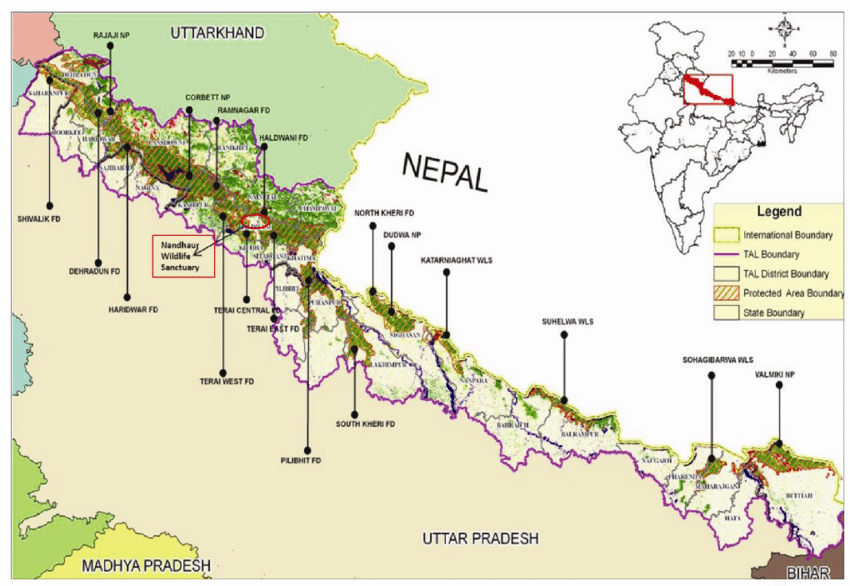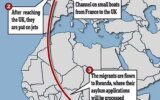
Wheat Blast
Subscribers of "Current Affairs" course can Download Daily Current Affairs in PDF/DOC
Subscribe to Never Miss an Important Update! Assured Discounts on New Products!
Must Join PMF IAS Telegram Channel & PMF IAS History Telegram Channel
- Context (DTE): Recent study established concerning link between climate change and wheat blast.
- Currently, it affects 6.4 million hectares of cropland globally.
- By 2050, climate change is projected to exacerbate the situation, putting 13.5 million hectares of cropland at risk.

Wheat Blast (WB)
- It is a fungal disease caused by the pathogen Magnaporthe oryzae pathotype Triticum (MoT).
- It was first identified in Brazil in 1985.
- It is a fast-acting and devastating disease that poses a significant threat to wheat crops, particularly in tropical and subtropical regions.
Symptoms
- Progressive bleaching of heads, where infected spikes show a silvery appearance with a green canopy, turning partially or fully bleached in severe cases.
- Infected plants exhibit discoloured stems and leave with dark brown lesions and visible dark grey fungal spores.

How does it spread?
- It spreads via infected seeds, posing threat to new crops as the fungus can persist within them.
- Airborne spores are key in wheat blast transmission, travelling long distances and swiftly infecting nearby wheat fields upon release.
- Infected crop residues containing the fungus aid in disease spread by surviving and infecting new plants under favourable conditions.
- Warmer temperatures and prolonged leaf moisture aid wheat blast pathogen spread, fostering disease growth.
- Also, international wheat trade has been a cause in some countries like Bangladesh and Zambia.
Implications
- It leads to significant yield reductions, with projections indicating a potential 13% global wheat production decrease.
- Vulnerable regions like South America and Africa could face up to 75% of their wheat acreage at risk by 2050.
- WB can incur significant economic losses in certain countries.
- Vulnerable wheat-growing regions in Bangladesh, India, and Pakistan could incur potential losses of 886 thousand metric tons of wheat production, amounting to USD 132 million annually.
- E.g. During the 2016 outbreak, an estimated total wheat production loss of approximately 8,205 tons, worth USD 2.1 million, was recorded.
- The spread of WB poses a threat to global food security, particularly in regions experiencing growing wheat consumption.
Way Forward
- Develop and promote wheat varieties resistant to WB.
- Combine race non-specific resistance genes to enhance durability.
- Fungicide spray applications can help manage WB.
- Strictly regulate the movement of contaminated plant material and farm equipment.
- Implement practices to break the disease cycle.
- Properly manage crop residues to reduce disease transmission.
- Use early warning systems to predict disease outbreaks.
- Investigate biological control agents to suppress WB (Beneficial microorganisms or natural enemies can play a role).




![PMF IAS Environment for UPSC 2022-23 [paperback] PMF IAS [Nov 30, 2021]…](https://pmfias.b-cdn.net/wp-content/uploads/2024/04/pmfiasenvironmentforupsc2022-23paperbackpmfiasnov302021.jpg)











